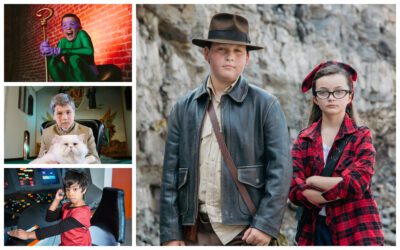[title subtitle=”words: Tom Wing, Historian”][/title]
Fort Smith was founded on Christmas Day, 1817, and since then has had its share of successes and failures, triumphs and tragedies, hard times and abundance. Our city certainly has a compelling story, one that we’d like to share with you over the coming year.
Each month we will explore some of the lesser-known, some-what obscure, and largely forgotten aspects of Fort Smith’s history. We will also approach a few well-remembered topics and famous people, from new perspectives and in some cases a different light. It is both fitting and proper that we take time to acknowledge Fort Smith’s 200th birthday, but perhaps we can go a little deeper. The Greek statesman Pericles saw his own city (Athens) as a center of commerce, a home to families, and a contributor to a larger nation, yet he also saw the city itself as a school. He envisioned a city-school through which its citizens and others could learn the lessons of time and be an example for the future. What can we, the students of today, learn from 200 years of history? The answer is simply an awful lot.
Our lessons include survival. The soldiers who landed and established the fort in 1817, were crack troops, including many War of 1812 veterans, who for one reason or another did not bring enough supplies along for the winter. Without the prospects of new supplies arriving by the river, the troops marched twenty-five miles west of Belle Point, and encountered a buffalo herd, something usually associated with lands much farther west, and brought enough meat back to make do until spring.
At that time, Fort Smith was at the edge of the known world. And at times, as Osage War Chief Mad Buffalo would prove, a hostile environment. Major William Bradford, (buried in the Fort Smith National Cemetery) challenged his men not only as soldiers, but also as farmers. In subsequent years the post garden would feed the garrison well and even land the Major in hot water for selling off the surplus grown on government property. Words like survival, adaptation, improvisation, and temptation are definitely part of the Fort Smith “school.”
These lessons are endless and come from a variety of sources such as World War II heroes, African American Jazz pioneers, Cherokee and Creek Freedmen, judges, juries, executioners, numerous visits by First Ladies, and foreign immigrants. There are also lessons to be learned from changes in industry, transportation, and commerce. Lastly, as one might expect from a historian, we will look at some of those who have tried to preserve and chronicle the 200-year history of Fort Smith.
Meet me here next month for lesson two of the Fort Smith-School, better known as our Bicentennial Year!
Learn more about Fort Smith by attending the free concert featuring Chris Cameron and Don Bailey, and showing a documentary chronicling the life of bandleader Alphonso Trent. The show is at the Blue Lion in downtown Fort Smith on January 25.




